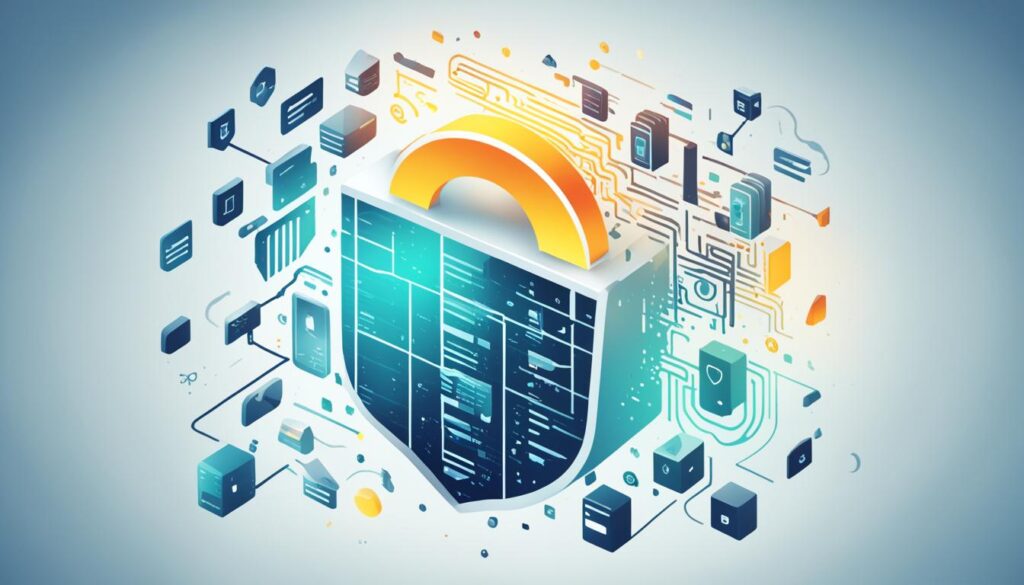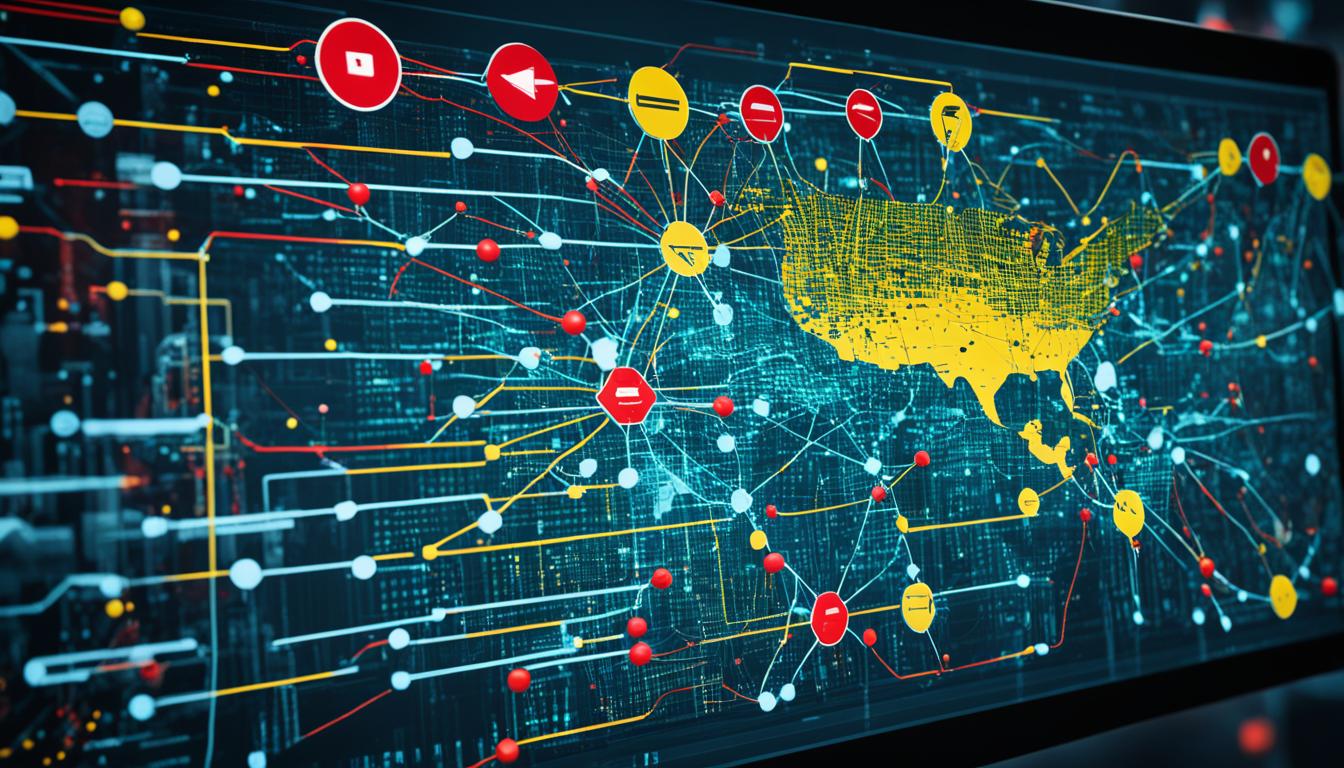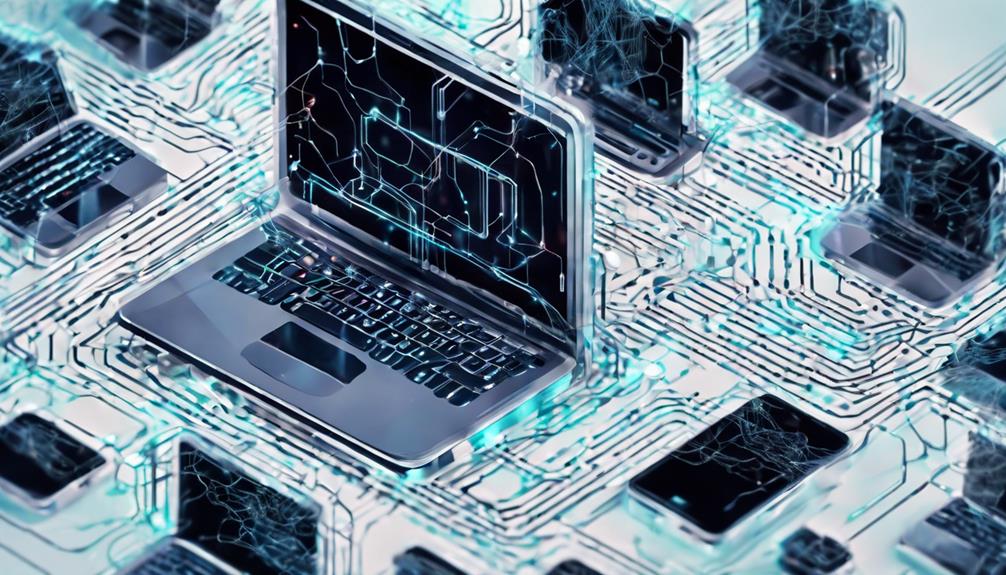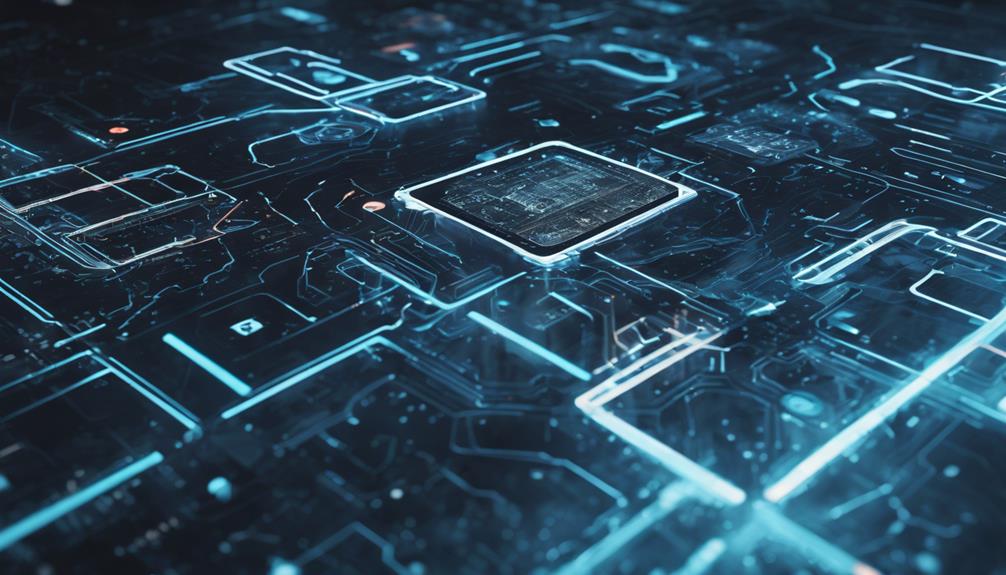The Internet of Things (IoT) has revolutionized the way we work, live, and play, capturing vast amounts of data including our location, how we shop, the content we see, and our network environments1. As IoT devices become more prevalent in our daily lives, ensuring their security has become crucial. Many IoT devices collect more data than they need to and are configured in a way that increases the risk of cyberattacks1. In order to protect these devices, manufacturers need to consider security at every stage of their software development process by following the Security Development Lifecycle (SDL)1. The SDL includes seven phases: Training, Requirements, Design, Implementation, Verification, Release, and Respond1. By following best practices for IoT security, such as IoT Endpoint Protection, IoT Gateway Security, Securing Cloud API, Developing a Secure Network, Up-to-date Data Encryption, and Protected Data Storage1, organizations can mitigate the risks associated with IoT devices and safeguard their network and sensitive data.
Key Takeaways
- IoT devices capture vast amounts of data, making their protection crucial in order to prevent cyberattacks1.
- Manufacturers should incorporate security measures into every stage of the software development process using the Security Development Lifecycle (SDL)1.
- Implementing best practices like IoT Endpoint Protection, IoT Gateway Security, Securing Cloud API, Developing a Secure Network, Up-to-date Data Encryption, and Protected Data Storage can enhance IoT device security1.
Developing an Effective IoT Security Strategy
An effective IoT security strategy is vital for safeguarding the interconnected network of IoT devices and protecting valuable data. As IoT technology continues to revolutionize various industries, including smart homes, smart TVs, and self-driving cars1, organizations must prioritize the implementation of robust security measures to mitigate the expanding attack surface and ensure comprehensive data protection1.
Integrating an IoT security strategy with the organization’s overall IT strategy and business plan is crucial1. This integration allows for a holistic approach to security, covering all areas of the business that utilize the IoT network. By aligning the security strategy with broader organizational goals and objectives, organizations can foster a culture of security awareness and accountability1.
An effective IoT security strategy should provide visibility into the organization’s IT architecture and endpoints1. This visibility allows organizations to identify potential vulnerabilities and implement appropriate security measures, such as securing devices, establishing secure connectivity, and implementing robust data storage and IT environment security measures1. It is essential to consider security at every stage of software development, focusing on secure coding practices and continuous security testing1.
One crucial aspect of an effective IoT security strategy is addressing security through the Security Development Lifecycle (SDL)1. The SDL ensures that security considerations are incorporated into various phases of software development, including design, coding, testing, and deployment1. By following this comprehensive approach, organizations can identify and remediate security vulnerabilities early in the development process, reducing the risk of IoT devices becoming targets for cyberattacks1.
Organizations must also recognize the importance of endpoint protection in their IoT security strategy1. IoT endpoint protection involves hardening devices to resist attacks, protecting against malware and unauthorized modifications, and reducing the attack surface through effective device management1. By implementing comprehensive endpoint protection measures, organizations can shield their IoT devices from potential security breaches1.
Key Components of an Effective IoT Security Strategy:
- IoT Endpoint Protection: Implement measures to harden devices, protect against malware, and minimize the attack surface1.
- IoT Gateway Security: Enforce internet access policies and protect devices from cyberattacks1.
- Securing Cloud API: Ensure authentication, encryption, and secure access to cloud APIs1.
- Developing a Secure Network: Implement access control mechanisms and secure network architecture1.
- Up-to-date Data Encryption: Encrypt data in motion and at rest to prevent unauthorized access1.
- Protected Data Storage: Utilize effective antivirus solutions, monitoring tools, and centralized management for secure data storage1.
Implementing an effective IoT security strategy requires ongoing evaluation and adaptation to address emerging threats and industry best practices1. By prioritizing IoT security and incorporating these best practices into their strategies, organizations can establish a robust defense against potential cyber threats, safeguard their IoT devices, and protect the integrity of their networks and data1.
Hardening IoT Endpoint Protection
Securing IoT devices requires a proactive approach to address vulnerabilities and protect against cyber threats. Hardening IoT endpoint protection is a critical step in this process, focusing on strengthening the security of devices and reducing the attack surface.
One of the key aspects of hardening IoT endpoint protection is addressing vulnerabilities in high-risk ports. TCP and UDP ports, commonly used for communication in IoT devices, need regular vulnerability patching1 to prevent potential exploits and unauthorized access.
Furthermore, securing wireless connections is essential to protect IoT devices from unauthorized access. Implementing strong encryption protocols and enforcing authentication measures can safeguard wireless networks against potential attacks and ensure secure communication between devices and gateways.
Malicious code injection poses a significant threat to IoT devices. By deploying endpoint protection solutions, organizations can detect and prevent malware and other malicious activities in real-time. These solutions provide visibility into connected devices, allowing organizations to monitor and respond promptly to any suspicious behavior1.
“Hardening IoT endpoint protection is key to securing devices and reducing the risk of cyberattacks.”
Securing IoT devices not only protects the devices themselves but also safeguards the network and sensitive data they interact with. By hardening IoT endpoint protection through vulnerability patching, securing wireless connections, and implementing endpoint protection solutions, organizations can fortify their IoT ecosystem and mitigate the risks posed by cyber threats1.
Ensuring IoT Gateway Security
Securing IoT devices goes beyond protecting the devices themselves, it also involves ensuring the security of the gateway through which these devices connect to the internet. IoT gateway security is crucial for preventing unwanted access and protecting the integrity and privacy of IoT networks and devices. By implementing secure internet access policies and blocking unauthorized software from accessing user connections, organizations can establish a strong defense against cyber threats.
Over 90% of IoT traffic is unencrypted2. This alarming statistic highlights the urgent need for robust IoT gateway security measures. Secure web gateways play a crucial role in preventing security risks for web-based traffic2. They filter and monitor internet traffic, blocking malicious content and preventing unauthorized access to IoT devices. By leveraging secure web gateways, organizations can significantly enhance IoT gateway security and protect against external and internal cyberattacks.
In addition to secure web gateways, threat monitoring solutions can provide real-time visibility into IoT networks, detecting and mitigating any potential security breaches. These solutions continuously monitor network traffic, analyzing patterns and behaviors to identify and respond to suspicious activities. By proactively monitoring IoT networks, organizations can promptly detect and address security threats before they can cause significant damage.
Virtual private networks (VPNs) provide an extra layer of security for IoT gateway connections2. By encrypting browsing data and establishing secure communication channels, VPNs protect against data leaks and unauthorized access. They ensure that sensitive information transmitted between IoT devices and the gateway remains secure and confidential.
It is essential for organizations to prioritize IoT gateway security and implement secure internet access policies. By incorporating secure web gateways, threat monitoring solutions, and VPNs into their IoT infrastructure, organizations can establish a strong defense against cyber threats and protect the confidentiality, integrity, and availability of their IoT devices and networks.
Securing Cloud API
When it comes to securing Internet of Things (IoT) devices, ensuring the protection of cloud application programming interfaces (APIs) is of paramount importance. Cloud APIs play a significant role in connecting IoT applications and systems, facilitating seamless data transfer and communication between devices. However, without proper security measures, cloud APIs can become vulnerable to data breaches and unauthorized access, putting sensitive information at risk.
One of the key aspects of securing cloud APIs is implementing robust authentication mechanisms. By utilizing strong authentication protocols, organizations can ensure that only authorized users and devices have access to the API endpoints. This helps prevent unauthorized entities from intercepting or manipulating the data transmitted through the APIs. Additionally, implementing encryption techniques such as secure sockets layer (SSL) and transport layer security (TLS) can further enhance the security of data transmitted via cloud APIs, providing an additional layer of protection against unauthorized access and data breaches. The use of encryption helps safeguard the confidentiality and integrity of data, making it harder for malicious actors to decipher and tamper with sensitive information.3
Another crucial security measure for protecting cloud APIs is the use of tokens. Tokens serve as temporary access credentials for authenticating and authorizing API requests. By employing tokens, organizations can implement fine-grained access control, allowing them to define specific scopes and permissions for different users and devices accessing the API. This not only enhances the security of the API but also provides more control over managing access to sensitive data.3
Additionly, organizations can utilize API gateways as a key component of securing cloud APIs. API gateways act as intermediary layers between clients and the API endpoints, providing an additional layer of security and control over API traffic. They can enforce security policies, perform authentication and authorization checks, and log API activities for monitoring and auditing purposes. API gateways also enable organizations to implement rate limiting, ensuring that API usage follows predefined thresholds and preventing potential abuse or overloading of the system.3
Web API security plays a crucial role in protecting data transmitted between servers and IoT devices. By implementing secure coding practices, organizations can minimize the risk of vulnerabilities in their APIs. Adhering to REST API encryption standards and following OWASP guidelines can strengthen the security posture of cloud APIs and mitigate the risk of data breaches or unauthorized access to sensitive information.3
To summarize, securing cloud APIs is vital for ensuring the integrity and confidentiality of IoT data. Authentication, encryption, token-based access control, and the utilization of API gateways are essential security measures for protecting cloud APIs. By implementing these best practices, organizations can safeguard their IoT systems and prevent unauthorized access to sensitive data, enhancing the overall security of their IoT infrastructure.
Building a Secure Network
Building a secure network connection is vital for IoT security, protecting devices, data, and the overall network infrastructure. By implementing robust security measures, organizations can mitigate the risks posed by cybercriminals and ensure the integrity of their IoT ecosystem.
Secure Firewall and Security Tools
A secure firewall serves as the first line of defense against unauthorized access and potential threats. It monitors and filters incoming and outgoing network traffic, identifying and blocking malicious activities. Utilizing advanced security tools, such as intrusion detection systems (IDS) and intrusion prevention systems (IPS), further strengthens network security by actively monitoring and preventing potential attacks.
Multi-Factor Authentication (MFA)
Implementing multi-factor authentication (MFA) adds an extra layer of protection to ensure that only authorized individuals can access IoT devices and sensitive data. MFA requires users to provide multiple verification factors, such as a password, biometric authentication, or a security token, significantly reducing the risk of unauthorized access4.
Network Segmentation
Network segmentation involves dividing the network into smaller subnets, isolating IoT devices from critical systems and data. This practice helps control and monitor network activity, limiting the potential impact of a breach. By segmenting the network, organizations can prevent the spread of unauthorized access or infection and enhance overall network security4.
Network segmentation is widely recognized as an effective security strategy. It separates devices into secure zones, preventing unauthorized access while limiting the damage from a successful breach4.
Network Monitoring
Continuous network monitoring is essential for detecting and responding to any suspicious activity or unauthorized access attempts promptly. Network monitoring solutions provide real-time visibility into network traffic, allowing organizations to identify potential threats and take immediate action to mitigate risks. By effectively monitoring the network, organizations can strengthen their security posture and maintain a secure IoT ecosystem.
Network monitoring plays a crucial role in maintaining the security of IoT networks. It helps organizations identify and respond to security incidents, ensuring the integrity and availability of their IoT devices and data4.
By following best practices such as implementing a secure firewall, deploying security tools, enabling multi-factor authentication, and utilizing network segmentation and monitoring, organizations can establish a secure network connection for their IoT devices. These measures work together to protect against cyber threats, safeguard sensitive data, and ensure the overall security and integrity of the IoT ecosystem.
Implementing Up-to-Date Data Encryption
In today’s interconnected world, protecting sensitive data in IoT networks is of utmost importance. Unencrypted data in IoT networks can expose valuable information and be susceptible to unauthorized access and eavesdropping4. To address this critical security concern, organizations must implement up-to-date encryption protocols to safeguard their IoT devices and communication channels4.
Encryption is an essential aspect of IoT data security. By employing both symmetric and asymmetric encryption methods, organizations can ensure the confidentiality and integrity of data transfers within their IoT ecosystem4. Symmetric encryption leverages a single shared key for both encryption and decryption, while asymmetric encryption involves the use of public and private keys, providing an enhanced level of security1.
Implementing robust data encryption measures protects sensitive information exchanged between IoT devices and networks from unauthorized access and eavesdropping4. Encryption serves as a security measure for data in motion, whether it is transferred between devices or onto the internet. Asymmetric and symmetric encryption methods are vital to secure data transmission and communications within IoT systems1.
In addition to implementing encryption protocols, organizations should prioritize password hygiene to bolster IoT data security. Relying on vendor-supplied default passwords can be risky, as these passwords are often easily exploitable by cybercriminals45. Strong authentication methods, such as biometrics and one-time passwords, should also be employed to prevent unauthorized access to IoT devices5.
Continuous monitoring software can further enhance IoT data security by tracking and managing devices effectively4. It enables organizations to identify potential vulnerabilities promptly and take appropriate action to mitigate risks. Regular updates, monitoring processes, and adherence to IoT security best practices are crucial to keep IoT devices and users secure15.
| Statistical Data | Source |
|---|---|
| The use of up-to-date encryption protocols is crucial for ensuring security within IoT networks | Link 1 |
| Encryption methods like symmetric and asymmetric encryption are essential to secure data transmission and communications within IoT systems | Link 2 |
| Default passwords in IoT devices make them vulnerable to cyberattacks, highlighting the importance of password hygiene | Link 1, Link 3 |
| Organizations are advised to continuously monitor their IoT devices and networks to detect risks and vulnerabilities | Link 2, Link 3 |
| Strong authentication methods and regular updates are essential for IoT security best practices | Link 3 |

Ensuring Protected Data Storage
In today’s interconnected world, protecting data storage is crucial to maintain the security of sensitive information collected and stored by IoT devices6. By implementing robust measures and utilizing advanced technologies, organizations can prevent unauthorized access to sensitive data and maintain the integrity of their IoT ecosystem.
One of the key steps to protect data storage is the use of antivirus solutions6. Deploying reliable antivirus software helps detect and mitigate potential threats, ensuring the safety of stored data. Combined with monitoring and scanning tools, antivirus solutions provide real-time protection and proactively identify any malicious activity that could compromise data security.
“Effective data storage protection includes flexible reporting, scanning, and notification systems, allowing organizations to promptly respond to any IoT threats.”
Centralized management consoles also play a crucial role in protecting data storage6. These consoles provide organizations with a centralized view of their IoT environment, allowing them to monitor and manage storage devices, ensuring optimal security measures are in place. Such management consoles enable flexible reporting, scanning, and notification systems, allowing organizations to promptly respond to any IoT threats that may arise.
Implementing encryption methods like Advanced Encryption Standard (AES) or Data Encryption Standard (DES) is highly recommended to secure IoT devices effectively7. Encryption ensures that data transmitted between IoT devices and servers remains confidential and cannot be intercepted by unauthorized parties. By employing robust encryption protocols, organizations can safeguard the privacy and integrity of their stored data.
Additionally, implementing Simple Network Management Protocol (SNMP) monitoring helps organizations monitor and manage IoT devices, further enhancing data storage protection7. SNMP monitoring allows for real-time tracking of device behavior and can provide valuable insights into potential security vulnerabilities or anomalies. By proactively monitoring their IoT devices, organizations can take appropriate action to prevent data breaches and ensure the security of their stored data.
Ensuring Robust Data Storage Protection: Best Practices
When it comes to safeguarding data storage in the IoT ecosystem, organizations should adopt a multi-layered approach. Here are some best practices to ensure robust data storage protection:
- Regularly update and patch IoT devices to address any known vulnerabilities6.
- Implement strong access controls and authentication mechanisms to prevent unauthorized access6.
- Utilize network segmentation to isolate IoT devices from critical systems and data6.
- Employ Remote Management and Monitoring (RMM) solutions to enhance patch management efficiency6.
- Delete and decommission unused IoT devices to reduce potential security risks in the network6.
- Regularly back up IoT data to ensure recoverability in case of data loss or breach6.
- Implement strong encryption methods to protect data transmitted between IoT devices and servers7.
- Utilize SNMP monitoring to track device behavior and identify potential security vulnerabilities7.
By incorporating these best practices into their data storage protection strategy, organizations can significantly reduce the risk of data breaches, maintain the integrity of their IoT ecosystem, and ensure continuous operation.
Table 8.1: Best Practices for Protecting Data Storage in IoT
| Best Practices | Benefits |
|---|---|
| Regularly update and patch IoT devices | Addresses known vulnerabilities and enhances device security |
| Implement strong access controls and authentication mechanisms | Prevents unauthorized access to data storage |
| Utilize network segmentation to isolate IoT devices | Enhances security by limiting the impact of a breach |
| Employ Remote Management and Monitoring (RMM) solutions | Enhances patch management efficiency |
| Delete and decommission unused IoT devices | Reduces potential security risks in the network |
| Regularly back up IoT data | Ensures recoverability in case of data loss or breach |
| Implement strong encryption methods | Protects data in transit between devices and servers |
| Utilize SNMP monitoring | Tracks device behavior and identifies potential vulnerabilities |
By following these best practices, organizations can establish a solid foundation for protecting data storage in their IoT ecosystem, safeguarding sensitive information and maintaining the trust of their stakeholders.

Importance of IoT Device Inventory and Management
The effective tracking and management of IoT devices within an organization play a crucial role in maintaining a secure IoT infrastructure.
Organizations must have a clear understanding of all connected IoT devices and their functionalities to ensure comprehensive security measures. Through meticulous device inventory, organizations can identify potential vulnerabilities and implement appropriate security controls. This is especially important considering the rapid growth of IoT devices and their integration into various business processes.
Continuous monitoring of IoT devices is essential to track, discover, and manage them effectively. By employing reliable monitoring software, organizations can gain real-time visibility into their IoT ecosystem and identify any potential risks or unauthorized access attempts.
A comprehensive device management strategy is imperative for security and compliance. This includes establishing and enforcing standardized device management policies, such as regular patching and firmware updates, to address vulnerabilities and ensure that devices are running on the latest software versions.
Penetration testing or vulnerability assessments should also be conducted periodically to identify any weaknesses within the IoT network. This enables organizations to remediate vulnerabilities and maintain a secure environment.
Segmenting networks and implementing multi-factor authentication are best practices to enhance IoT device security. By separating IoT devices from critical systems through network segmentation, organizations can isolate potential threats and limit the impact of a breach. Additionally, multi-factor authentication adds an extra layer of security, requiring users to provide multiple verification factors to access IoT devices.
It is essential to prioritize the understanding and management of endpoints within the IoT network. This involves monitoring and securing devices at the point where they connect to the network and ensuring they adhere to the organization’s security policies. By effectively managing endpoints, organizations can establish a secure network environment and significantly reduce the risk of unauthorized access or data breaches.
Overall, maintaining a comprehensive IoT device inventory and implementing robust management practices are crucial components of an effective IoT security strategy. By proactively monitoring, tracking, and managing IoT devices, organizations can mitigate the risk of unauthorized access, data breaches, and other security threats, ensuring the integrity and safety of their IoT ecosystem.
Importance of IoT Device Inventory and Management Statistics:
| Statistic | Reference |
|---|---|
| 8 best practices provided to improve IoT security in organizations | 4 |
| Explanation and importance of securing IoT devices to protect sensitive data and ensure safety | 4 |
| Mention of the necessity for up-to-date encryption protocols to safeguard data within a network | 4 |
| Importance of continuous monitoring software to track, discover, and manage devices | 4 |
| Recommendation to perform penetration testing or evaluation to identify vulnerabilities and ensure compliance | 4 |
| Suggestion to segment networks and employ multi-factor authentication to enhance security | 4 |
Patching and Remediation for IoT Devices
Regular patching and remediation efforts are crucial for ensuring the security of IoT devices. Organizations must prioritize the ability to patch and update IoT devices over time in order to address vulnerabilities and mitigate potential risks. By implementing a remote management and monitoring (RMM) solution, organizations can efficiently manage patching by scheduling updates and automatically pushing them to relevant devices. This helps ensure that IoT devices remain up to date and protected against emerging threats and vulnerabilities4.
One of the key challenges organizations face is the constant increase in connected devices within corporate networks. With 70% of organizations struggling with effective endpoint security, the need for proactive patching becomes even more critical4. Many IoT devices are shipped with vendor-supplied default passwords, making them vulnerable to cybercriminals. The importance of updating passwords and credentials cannot be overstated4.
It’s worth considering patching and remediation efforts even before implementing a new IoT device. Some devices may have limited patching capabilities, making remediation a necessary step to ensure their security4. In addition to patching, the use of up-to-date encryption protocols is essential. Encryption protects against IoT threats and makes data illegible for unauthorized users, further bolstering the security of IoT devices and networks4.
“Penetration testing can play a crucial role in identifying vulnerabilities and improving security awareness to prevent serious IoT threats in the future. By conducting thorough testing and evaluation, organizations can strengthen their security posture and protect against cyberattacks.”
Penetration testing, which involves identifying vulnerabilities through simulated attacks, can be a valuable strategy for enhancing IoT security4. By conducting regular penetration testing exercises, organizations can identify weaknesses in their IoT infrastructure and proactively address them to prevent potential breaches.
Understanding the security implications of IoT endpoints is also vital. Each new IoT device introduced into a network creates a potential entry point for cybercriminals, underscoring the need for robust security measures4. Organizations can enhance the security of their IoT ecosystem by segmenting their computer networks. Network segmentation involves splitting networks into sub-networks, making it easier to combat unauthorized access and prepare for cyberattacks4.
Another key recommendation for securing IoT devices is to encourage the use of multi-factor authentication. Multi-factor authentication adds an extra layer of protection by requiring users to provide two or more verification factors before accessing an IoT device, significantly reducing the risk of unauthorized access4.
To summarize, patching and remediation efforts are fundamental in enhancing the security of IoT devices. By prioritizing these efforts and implementing remote management and monitoring solutions, organizations can ensure that devices are regularly patched and updated to address vulnerabilities and mitigate potential risks. Furthermore, organizations should prioritize updating passwords and credentials, consider remediation efforts for devices with limited patching capabilities, and utilize up-to-date encryption protocols. Conducting penetration testing, understanding IoT endpoints, segmenting networks, and implementing multi-factor authentication are additional best practices to strengthen IoT device security4.
Best Practices for Passwords and Credentials
Securing IoT devices involves implementing best practices to protect them from cyber threats and unauthorized access. One fundamental aspect of IoT security is ensuring strong password security and proper management of credentials. Default or weak credentials pose a significant risk to the security of IoT devices and networks.
Organizations should enforce the use of strong and unique passwords for all IoT devices. It is crucial to avoid password reuse and regularly update passwords to prevent cybercriminals from exploiting default vendor-supplied passwords. By maintaining good password hygiene, organizations can significantly enhance the overall security of their IoT network.
Additionally, implementing multi-factor authentication (MFA) adds an extra layer of security to protect IoT networks against unauthorized access. MFA requires users to provide multiple verification factors, such as a password and a unique code sent to their mobile device, to access IoT devices. This proves to be an effective deterrent against cyberattacks targeting IoT devices.
By following these best practices for passwords and credentials, organizations can strengthen the security of their IoT devices, prevent unauthorized access, and protect sensitive data within their network. It is crucial to stay vigilant and continually update password policies and enforce MFA to keep up with evolving cyber threats.
| Best Practices for Passwords and Credentials |
|---|
| Updating passwords and credentials is crucial for preventing cybercriminals from exploiting default vendor-supplied passwords4. |
| Implementing multi-factor authentication adds an additional layer of security to IoT networks and enhances overall protection against cyberattacks4. |
The Role of Endpoint Security
As the Internet of Things (IoT) continues to expand, the security of IoT devices becomes increasingly important. IoT devices introduce new endpoints into the network, which in turn increases the potential attack surface. To maintain a secure network, understanding and profiling IoT endpoints is crucial. Organizations must implement robust endpoint security measures to protect their IoT devices and prevent unauthorized access.
Protecting Against Malicious Threats
Endpoint security tools, such as anti-virus software and mobile device management, play a vital role in safeguarding IoT devices from malicious threats. These tools provide a range of features that enhance security, including:
- Security patch updates: Regular updates ensure that devices have the latest security enhancements and protection against emerging threats.
- Data encryption: By encrypting sensitive data, organizations can ensure its confidentiality, mitigating the risk of unauthorized access.
- Monitoring capabilities: Endpoint security solutions offer real-time monitoring to detect and respond to security incidents promptly.
By implementing these endpoint security measures, organizations can significantly reduce the risk of cyberattacks on their IoT devices.
The Importance of Endpoint Management
Endpoint management plays a critical role in maintaining the security of IoT devices. Organizations need to:
- Track and locate devices: Endpoint security software enables organizations to track and locate mobile devices such as laptops and cell phones globally. This helps in monitoring and securing devices across geographically dispersed locations.
- Implement centralized management: Centralized management consoles provide organizations with a unified view of all IoT endpoints, allowing for efficient monitoring, configuration management, and security policy enforcement.
- Enforce security policies: Endpoint management tools allow organizations to enforce security policies, ensuring that all devices adhere to established security standards and best practices.
By effectively managing IoT endpoints, organizations can maintain control over their IoT ecosystem and minimize potential security risks.
Preventing Unauthorized Access
Endpoint security measures are essential in preventing unauthorized access to IoT devices. They help protect devices from exploitable vulnerabilities and ensure that only authorized users can access them. Organizations should also consider:
- Regular security audits: Conducting regular security audits, including penetration testing and vulnerability assessments, helps identify and address potential vulnerabilities within IoT ecosystems.8
- Automating software updates: Automated software and firmware updates are crucial to ensuring that IoT devices remain protected against emerging threats.8
By combining robust endpoint security measures with regular audits and automated updates, organizations can significantly strengthen the security of their IoT devices.

The Role of Anti-Virus Software
Anti-virus software is an essential component of endpoint security for IoT devices. It provides protection against known malware, viruses, and other malicious software that can compromise device security. By regularly updating anti-virus software and conducting system scans, organizations can detect and remove potential threats that may affect the performance and security of their IoT devices.
In summary, securing IoT devices through endpoint security measures is vital in today’s interconnected world. By implementing anti-virus software, utilizing endpoint management tools, and taking proactive steps to prevent unauthorized access, organizations can effectively protect their IoT devices from cyber threats and ensure the integrity of their IoT ecosystem.
The Importance of Network Segmentation
Network segmentation is a critical aspect of IoT security. By dividing the network into smaller subnets, organizations can isolate IoT devices from critical systems and limit the impact of a breach. This not only enhances IoT network security but also protects sensitive data and devices from unauthorized access and potential cyber threats.
Implementing zero-trust protocols is another vital consideration in IoT security. By employing this approach, organizations ensure that new devices are quarantined until they undergo a review process, minimizing the risk of unauthorized access and potential breaches. Zero-trust protocols provide an additional layer of protection, particularly in today’s highly interconnected and vulnerable IoT landscape.
Network segmentation also enables organizations to control and monitor network activity more effectively. By implementing granular access controls and restrictions, organizations can better manage who can access IoT devices and limit their internet connectivity. This level of control is essential in protecting against cyberattacks and minimizing the exposure of IoT devices to potential threats.
One of the key benefits of network segmentation is its ability to enhance network performance and optimize traffic flow. By dividing the network into smaller segments, organizations can reduce network congestion and improve overall network efficiency. This ensures that traffic related to IoT devices is properly prioritized and allocated, enhancing the performance of critical systems and applications.
Furthermore, network segmentation enables better network monitoring and analytics. By segregating IoT devices into their own network segments, organizations can gain more visibility into the behavior and activities of these devices. This facilitates the detection of any anomalies or suspicious behavior, enabling organizations to respond swiftly and effectively to potential security threats.
Implementing network segmentation can be a complex endeavor, especially in more elaborate network architectures. However, the effort is well worth it, considering the benefits it brings in terms of network security and performance improvement. Organizations with intricate internal systems, both physical and virtualized, must prioritize network segmentation to safeguard their network against cyber threats and breaches.

Benefits of Network Segmentation
| Benefits | Description |
|---|---|
| Limits attack surface | Network segmentation reduces the potential attack surface, minimizing the impact of a breach and enhancing overall security. |
| Improves access control | By implementing network segmentation, organizations have better control over who can access IoT devices and critical systems. |
| Reduces the attack plane | Network segmentation restricts unauthorized access to IoT devices, reducing the avenues for attackers to exploit. |
| Enhances compliance scope | Segmenting the network aids organizations in achieving and maintaining compliance with industry-specific regulations. |
| Optimizes network traffic performance | Network segmentation improves the efficiency of network traffic flow, ensuring smooth operation of critical systems and applications. |
| Provides better network monitoring analytics | By isolating IoT devices in their own network segments, organizations gain better visibility into their behavior for effective monitoring and analysis. |
| Protects endpoint devices | Network segmentation helps in restricting access to IoT devices, minimizing the risk of compromise and potential damage to endpoints. |
Implementing Multi-Factor Authentication
Multi-factor authentication (MFA) is a crucial security measure for enhancing device security and controlling access to IoT devices. By requiring users to provide multiple verification factors, organizations can significantly strengthen the overall security of their IoT network. This extra layer of authentication protects against unauthorized access and helps prevent potential cyber threats9.
MFA is more secure than single-factor authentication because passwords can be weak or easily hacked. With MFA, users must provide additional evidence beyond just a password, ensuring a higher level of security9. MFA requires users to authenticate using at least two of the following factors: knowledge (password or PIN), possession (device or token), biometric characteristics (fingerprint or face recognition), and location/time of login. By combining these multiple pieces of evidence, MFA creates a robust authentication process that is ideal for businesses and organizations handling sensitive information9.
Implementing MFA provides an effective defense against various cyber-attacks, including phishing, social engineering, key logging, and brute force attacks. By adding these additional layers of verification, MFA helps prevent unauthorized access to IoT devices and ensures that only authorized users can interact with them9.
Biometric scanning is an advanced and highly secure method used in MFA. It analyzes the user’s inherent biological traits, such as fingerprints or facial features, for verification. While biometric scanning may be more expensive to implement, it offers a higher level of security and is increasingly being adopted by organizations that prioritize strong authentication methods9.
Organizations can streamline the implementation and usage of MFA by utilizing dedicated MFA apps like Google Authenticator. These apps generate time-based one-time passwords (TOTPs) that users can input along with their other verification factors. This simplifies the authentication process and makes it more convenient for both employees and organizations to adopt and enforce MFA9.
Despite the numerous benefits of MFA, there is still a gap in its implementation among businesses. According to a survey, only 57% of surveyed businesses currently utilize MFA to protect their IoT devices. This indicates a need for greater awareness and adoption of this crucial security measure in the IoT ecosystem9.
In conclusion, implementing multi-factor authentication is essential for enhancing device security and ensuring IoT access control. By requiring multiple verification factors, MFA strengthens the authentication process and protects IoT devices from potential cyber threats. Organizations should prioritize the implementation of MFA to create a more secure IoT network and safeguard their sensitive data9.
Conclusion
Securing IoT devices is crucial in today’s interconnected world. By implementing best practices and following industry guidelines, organizations can mitigate the risks associated with IoT devices and protect their devices, data, and network from cyber threats.
Regular security audits are essential for identifying vulnerabilities within the IoT ecosystem8. Penetration testing, vulnerability assessments, and compliance checks help organizations proactively detect and address potential security weaknesses.
Utilizing multi-factor authentication (MFA) significantly enhances security for IoT devices8. By requiring multiple verification factors, such as a password and a unique token, organizations can ensure that only authorized users can access their IoT devices.
Implementing strong authentication mechanisms is a primary step in securing IoT devices8. By enforcing the use of strong and unique passwords, organizations can prevent unauthorized access and reduce the risk of security breaches.
Educating users and staff about best practices for using and managing IoT devices is crucial
. Human error remains a significant risk factor in IoT device security. By raising awareness about security protocols and providing comprehensive training, organizations can empower their users to make informed decisions that protect their IoT devices from potential attacks.
Securing communication protocols with encryption is essential to protect data integrity and confidentiality in IoT devices8. Implementing secure protocols such as HTTPS, SSL/TLS, and MQTT helps organizations ensure that data transmitted between IoT devices and networks remains encrypted and inaccessible to unauthorized parties.
Network segmentation reduces the risk of widespread breaches for IoT medical device security8. By dividing a network into smaller segments or subnetworks, organizations can isolate IoT devices and limit the impact of compromised devices, protecting critical systems and data.
In conclusion, organizations must adopt a holistic approach to IoT security, implementing a combination of best practices and security measures. By hardening endpoints, ensuring gateway security, securing cloud APIs, and building a secure network, organizations can create a robust IoT ecosystem. Regular patching and updating of devices, implementing MFA, and educating users further enhance the security posture. By following these practices, organizations can safeguard their IoT devices and protect against potential cyber threats, ensuring the integrity and security of their IoT infrastructure.
FAQ
What are the best practices for securing IoT devices?
How can I develop an effective IoT security strategy?
What is the importance of hardening IoT endpoint protection?
How can I ensure IoT gateway security?
How can I secure cloud APIs used in IoT applications?
What steps should I take to build a secure network for IoT devices?
How does data encryption ensure IoT device security?
How can I ensure protected data storage for my IoT devices?
Why is it important to track and manage IoT devices within an organization?
How important is patching and remediation for IoT device security?
What are the best practices for passwords and credentials in IoT device security?
What is the role of endpoint security in securing IoT devices?
Why is network segmentation important for IoT security?
How does multi-factor authentication enhance IoT device security?
Source Links
- https://www.fortinet.com/resources/cyberglossary/iot-best-practices
- https://www.byos.io/blog/iot-device-security
- https://dig8ital.com/post/iot-cloud-security/
- https://securityscorecard.com/blog/best-practices-for-securing-internet-of-things/
- https://deviceauthority.com/security-issues-of-iot-securing-your-iot-device-in-2023/
- https://www.ninjaone.com/blog/how-to-secure-iot-devices-5-best-practices/
- https://dig8ital.com/post/iot-network-security/
- https://bcs365.com/insights/8-best-practices-for-securing-iot-devices/
- https://www.iotforall.com/multi-factor-authentication-is-crucial-for-iot-security
- https://fiveeyescyber.com.au/5-best-practices-for-securing-internet-of-things-iot-devices/









